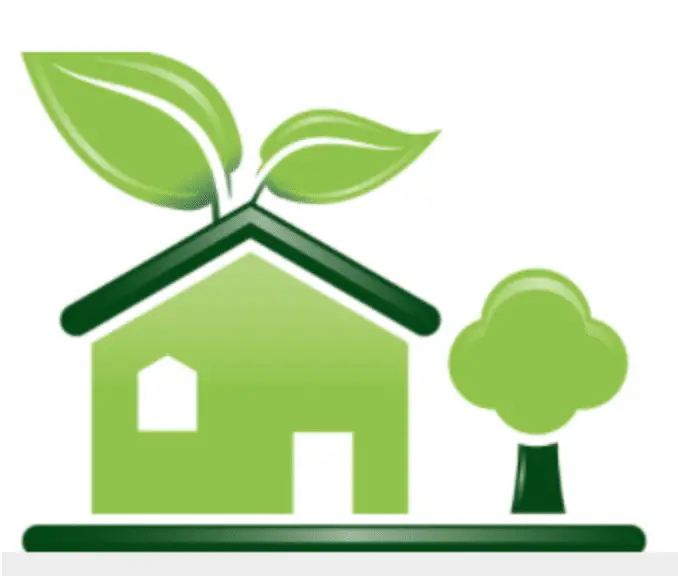
Insulated Vinyl Siding: An Eco Friendly Siding Option
Living in New England, today’s homeowners want to know their home exterior offers the best protection for their home with the least impact on the environment. How can I lower my carbon footprint?
Insulated vinyl siding is one of the top environmentally friendly siding options, especially compared to exterior siding choices such as fiber cement and brick. Vinyl siding has less waste which equals less impact on the environment but at the same time it’s also durable and affordable.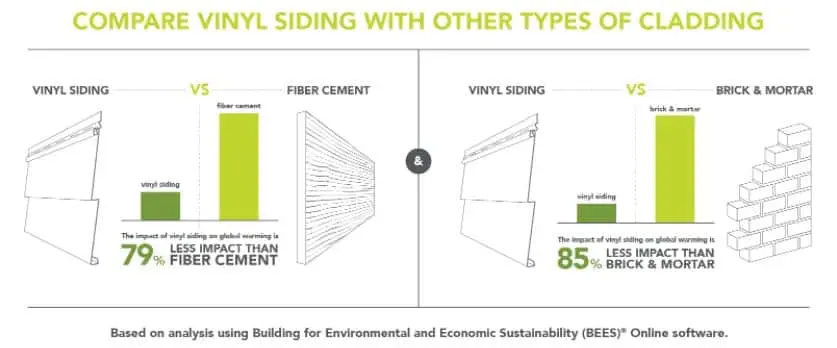 <
<
Less Impact on the Environment
- Our vinyl siding is a surprisingly green and sustainable siding option compared to many other cladding choices by looking at the overall life cycle analysis. Vinyl siding requires minimal raw material and produces virtually no waste.
- Vinyl siding requires less water and energy per square foot than fiber cement and less than half the energy and fuel of brick and mortar.
- Plus since vinyl is a much lighter product it requires less fossil fuel for transportation.
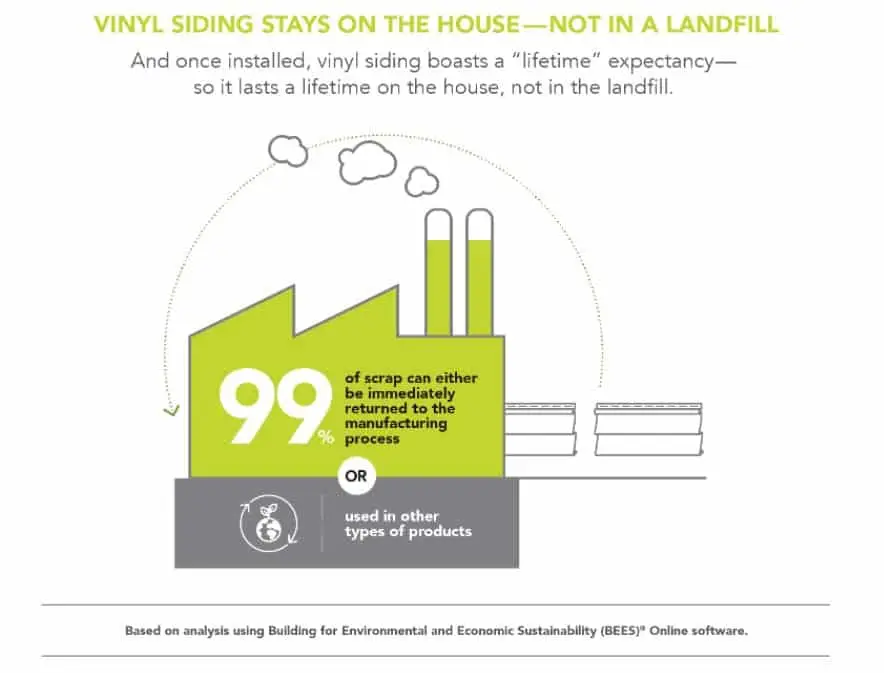
And on the jobsite, VSI Certified Installers are trained to reduce waste during installation. This means that 99% of scrap can be either immediately returned to the manufacturing process or used in other products, keeping it out of the landfill.
Overall, vinyl siding has a significantly lower impact on global warming than most other exterior siding products and it is one of the only exterior cladding options to be UL Certified.
A UL certification means that the cladding undergoes a rigorous testing and certification process. Vinyl siding is tested for safety, performance, reliability, durability, and sustainability.
The UL certification allows us to showcase in complete confidence the sustainability of our insulated vinyl siding. Not only will it meet sustainability requirements for architects and builders, but also homeowners.
Can Vinyl Siding Be Recycled?
Recycling is the process of making new products from waste material. With sustainability siding like vinyl, It helps and helps improve the environment by reducing waste and landfill accumulation and incineration, which leads to greenhouse gas emissions.
Vinyl siding lends itself to recycling because it is made from vinyl (also known as polyvinyl chloride or PVC.) and can be ground up repeatedly and formed into a variety of new products.
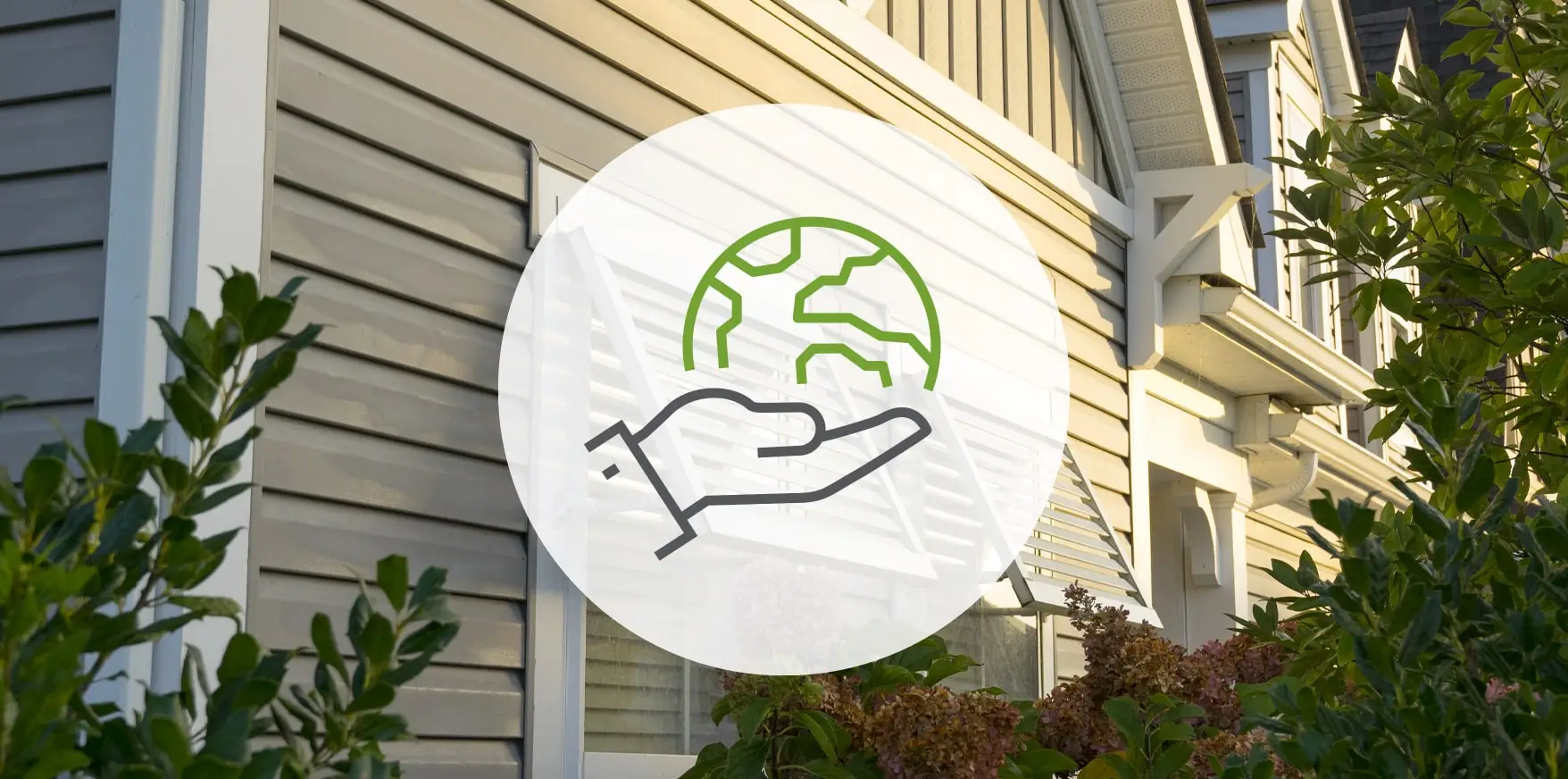
Closed-Loop Recycling
This type of recycling is used at the factory with in-house material.This process is efficient as it uses low energy. With vinyl siding, 57% of the raw material is salt. This makes it easy to grind up and to be used again to create new siding or other products.
Landfill Diversion
Once the dumpster gets picked up at a job site, it is then sorted at a recycling facility. This is a vital component to help reduce landfills and lower emissions.
Vinyl Siding vs. the Competition
Compared to other common siding, insulated vinyl performs remarkably well. This chart shows how vinyl beats fiber cement and brick, hands down, and rivals even cedar siding.
FACT: Throughout its life cycle, vinyl siding has 79% less impact on global warming than fiber cement and 85% less impact than brick and mortar.
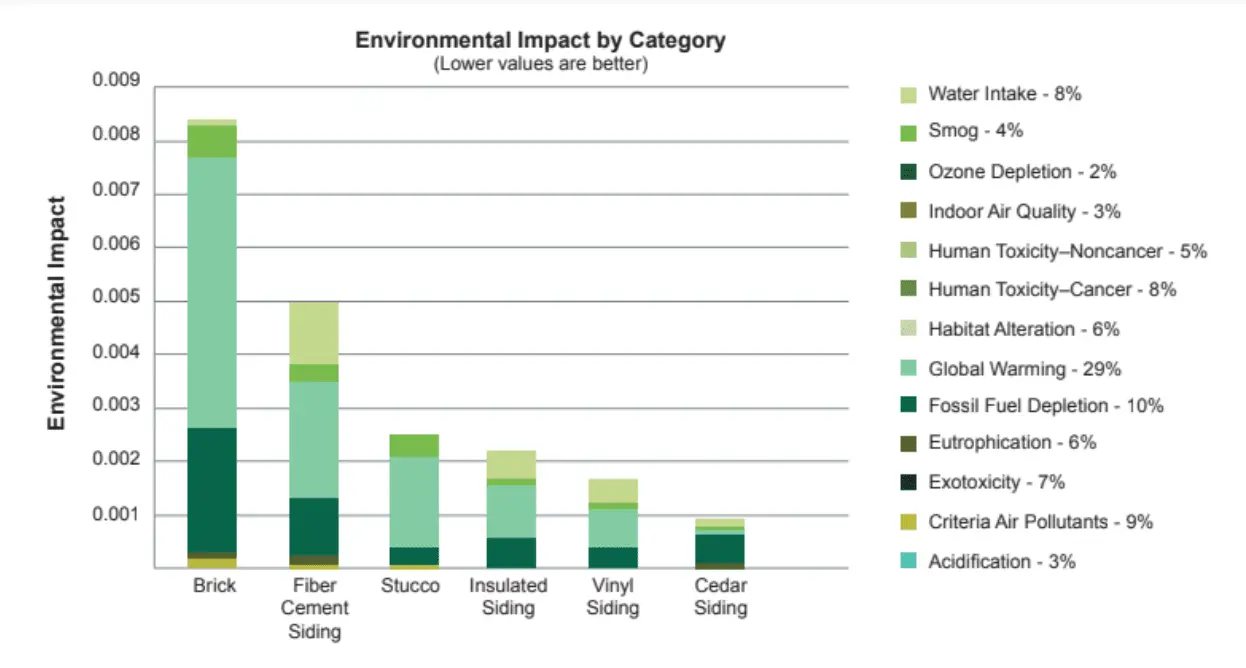
- Polyvinyl chloride (PVC) owes its environmental performance to the fact that it’s weatherable, chemically stable and lightweight. It can also be easily recycled. The manufacturing process efficiently utilizes these properties to create durable siding with relatively low waste—recycling virtually all of the waste generated during manufacturing start-up and product changeovers back into the product stream.
- Building for Environmental and Economic Sustainability (BEES) software was developed by the National Institute of Standards and Technology (NIST) to analyze the environmental life cycle of a product. It begins with the raw materials, follows the product through its manufacturing processes, into the service life and ultimately the waste management policies. The life cycle analysis can also be broken down into specific environmental concerns like air pollution, acidification and global warming potential.
- When you consider that vinyl has only a slightly larger impact on the environment than cedar but costs less while being easier to maintain and recyclable, it makes it an excellent choice for most people.
Vinyl Siding v. Fiber Cement
Vinyl siding has a substantially lower carbon impact in comparison to fiber cement. In every environmental impact category, fiber cement underforms in the following ways:
- Almost 4x the global warming potential in comparison to vinyl
- More than 2x the acidification compared to vinyl
- More than 3.5x the air pollution than vinyl
Furthermore, cutting vinyl siding will not liberate silica dust like the cutting of fiber cement does. This airborne silica may possibly cause adverse health effects.
The impact category with the most favorable performance for both forms of vinyl siding is the non-carcinogenic category, where impacts are only 1% of those for fiber cement.
Keep in mind that average vinyl siding is only 19% of average fiber cement’s ozone depletion impact. Overall, vinyl is 21% of fiber cement’s global warming impact.
Vinyl Siding v. Cedar Board
Cedar Board siding is desirable to some homeowners because of its rustic yet attractive appearance. In addition to its maintenance requirements, cedar siding is certainly not an eco friendly siding option especially in comparison to vinyl.
In fact, Cedar Board is over 2x as high as vinyl siding when it comes to ozone depletion. Meanwhile, cedar siding also has a 42% higher smog impact.
Vinyl siding has lower impacts than cedar board in the following categories:
- ozone depletion
- smog
- global warming
- acidification
- eutrophication
- non-carcinogenic impact categories.
- The impact category with the most favorable performance for vinyl siding is the eutrophication category, where impacts are only 13% of those for cedar board.
Specifically, Insulated vinyl siding has lower impacts than cedar board in the following categories:
- ozone depletion
- smog
- eutrophication
- eutrophication is again the category with the best performance as impacts are only 14% of those for cedar board.
Vinyl Siding v. Brick & Mortar
In terms of environmentally friendly siding options, brick and mortar os a close competitor to vinyl siding but still doesn’t quite stack up.
Why? Compared to average brick and mortar, both vinyl siding and insulated vinyl siding have lower impacts in all but one of the categories (Primary Energy Demand – Renewable).
The impact category with the best performance is smog, where impacts are only 11% and 15% respectively of those for brick and mortar.
The Final Verdict
Vinyl is an Incredible Sustainable Siding Option New England comes with a range of siding options, with some standing as sustainably while others miss the mark. The above comparisons from Vinyl Siding Institute show the greener advantages of siding which include categories that influence climate change.
Combined environmental impact scores (EIS) show vinyl siding is way ahead of the competition. There is simply no denying that vinyl is a sustainable siding option!
Performs well on your home and in the environment. Our vinyl siding offers a beautiful array of colors and profiles that are durable, low maintenance and include an industry leading warranty. It is a green sustainable product that lasts a lifetime.
We also have a bonus for you if you love the look of wood siding without the harmful impact on the environment. Our vinyl siding is engineered to look like real wood siding, including cedar shakes with a hand-split appearance.
Get Sustainable Siding
When you’re searching for environmentally friendly siding options, consider our quality vinyl siding. It’s engineered to look like real wood without the negative environmental impacts. Our siding is sustainable, beautiful, and designed to last for life so it stays out of the landfill for good.
Sources:
https://www.vinylsiding.org/vsi-resources/sustainability/
https://www.vinylsiding.org/blog/the-case-for-vinyl-sidings-eco-friendly-benefits-gets-stronger/


